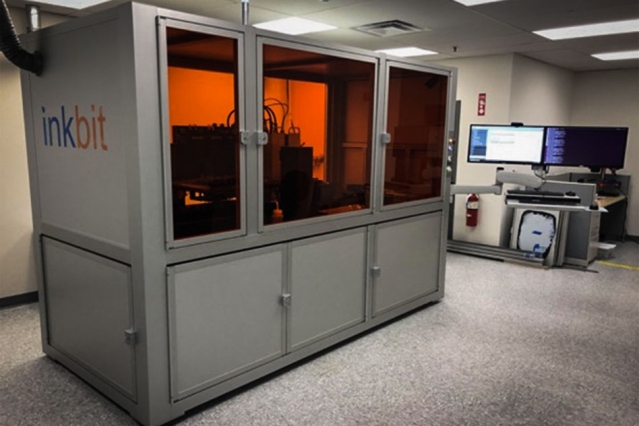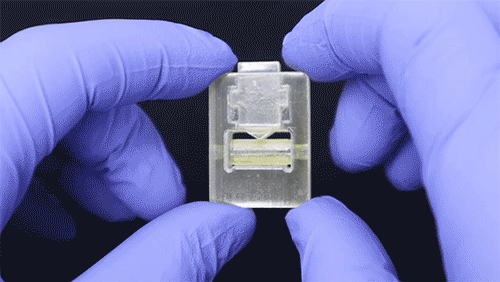Inkbit, an MIT startup, is comprised of a research team that truly understands the current status of 3D printing around the world—and especially in manufacturing scenarios. Their comprehensive knowledge cuts straight through all the talk of magic and miracles, and gets to the heart of the matter: there isn’t going to be much of an industrial revolution if 3D printers can’t outdo conventional machinery in creating the most commonly used components.
It is a well-known fact that 3D printers can often push the envelope and all the boundaries of innovation, and are now behind the production of items never before possible, but in many cases industrial companies do not need a brand new item never before heard of—they just want to make what is required, and to do so in a high-quality way that is more efficient and more affordable; otherwise, there isn’t much reason to look into other technology or materials.
While many manufacturers of 3D printers today refer to their shiny new retail 3D printers as ‘all-in-one’ machines, the Inkbit team understands that most printers today rarely offer all the points of strength required at once. Because of this, 3D printing does remain more relegated to rapid prototyping purposes for a wide range of industrial manufacturing leaders—and offers many benefits in that role; however, most users are not content to accept limitations with 3D design and 3D printing. They continue to press on despite challenges—because like the team at Inkbit, they see the infinite amount of potential for the future.
Inkbit is ready to disrupt in a radical way, with a plan to create volumes of new products via their new multimaterial inkjet 3D printer imbued with a vision system that scans each layer being fabricated and corrects any errors. Not only that, these ‘eyes’ are forward thinking and can actually foresee potential issues with warping—allowing the user to fix any problems and go on to print successfully.
“The company was born out of the idea of endowing a 3D printer with eyes and brains,” says Inkbit co-founder and CEO Davide Marini.
The Inkbit 3D printer offers numerous futuristic qualities, such as the ability to print around an object centered on the print area—like a chip. It also has a memory function, storing replicas of prints for quality assurance measures later. While they have only built one production-grade printer so far, the Inkbit team plans to begin selling 3D printed products later in the year. First, however, they will embark on a pilot program with Johnson and Johnson, who is interested in acquiring one of Inkbit’s first printers.
Inkbit also hopes to leverage funding soon from companies who may have an interest due to products they already manufacture, such as:
- Dental aligners
- Sleep Apnea masks
- Industrial tooling
- Consumer products
- Automotive components
“Everyone knows the advantages of 3D printing are enormous,” Marini says. “But most people are experiencing problems adopting it. The technology just isn’t there yet. Our machine is the first one that can learn the properties of a material and predict its behavior. I believe it will be transformative, because it will enable anyone to go from an idea to a usable product extremely quickly. It opens up business opportunities for everyone.”
The Inkbit team has certainly not just entered the 3D printing realm on a whim either, with the following co-founds working on problems related to the technology for years: Wojciech Matusik, an associate professor of electrical engineering and computer science, Javier Ramos BS ’12 SM ’14, Wenshou Wang, and Kiril Vidimče SM ’14 have been working on these problems for years in Matusik’s Computational Fabrications Group within the Computer Science and Artificial Intelligence Laboratory (CSAIL).

The first 3D printer made by Inkbit, a startup out of MIT, uses machine vision and artificial intelligence to expand the range of materials it can print with, bringing all the benefits of 3-D printing to a slew of products that have never been printed before.
The co-founders have been working on a printer so functional that it could print up to ten materials at once—with a design that earned funding from the MIT Deshpande Center. The first Inkbit printer featured the unique set of ‘eyes’ they have been determined to perfect, which mean refining the underlying scanning system.
According to Marini they ‘bit the bullet’ in customizing a scanner that is now ‘100 times faster than anything else on the market today.’
The vision system and the machine-learning system work in tandem to correct issues like shrinkage, and prototypes and innovative new products that are meant to be functional can be 3D printed on the same machine. Their industrial version has a stunning 16 print heads to ensure a voluminous amount of production, along with the capability to print in multiple materials.
“Before, people could make prototypes with multimaterial printers, but they couldn’t really manufacture final parts,” Matusik says, noting that the postprocessing of Inkbit’s parts can be fully automated. “This is something that’s not possible using any other manufacturing methods.
“Some of this is so far ahead of its time. I think it will be really fascinating to see how people are going to use it for final products.”

Inkbit’s 3D printer can produce multimaterial objects (like the pinch valve shown above) at high volumes. (Photo: Courtesy of Inkbit)
The need for more intuitive 3D printing hardware and software continues to grow, as some of the brightest minds in engineering, design, research and more focus on the use of more complex features such as artificial intelligence for image recognition, robotics in manufacturing, and drones for mapping information. What do you think of this news? Let us know your thoughts! Join the discussion of this and other 3D printing topics at 3DPrintBoard.com.
[Source: MIT News; Photos: Inkbit]Subscribe to Our Email Newsletter
Stay up-to-date on all the latest news from the 3D printing industry and receive information and offers from third party vendors.
You May Also Like
Profiling a Construction 3D Printing Pioneer: US Army Corps of Engineers’ Megan Kreiger
The world of construction 3D printing is still so new that the true experts can probably be counted on two hands. Among them is Megan Kreiger, Portfolio Manager of Additive...
US Army Corps of Engineers Taps Lincoln Electric & Eaton for Largest 3D Printed US Civil Works Part
The Soo Locks sit on the US-Canadian border, enabling maritime travel between Lake Superior and Lake Huron, from which ships can reach the rest of the Great Lakes. Crafts carrying...
Construction 3D Printing CEO Reflects on Being Female in Construction
Natalie Wadley, CEO of ChangeMaker3D, could hear the words of her daughter sitting next to her resounding in her head. “Mum, MUM, you’ve won!” Wadley had just won the prestigious...
1Print to Commercialize 3D Printed Coastal Resilience Solutions
1Print, a company that specializes in deploying additive construction (AC) for infrastructure projects, has entered an agreement with the University of Miami (UM) to accelerate commercialization of the SEAHIVE shoreline...






























